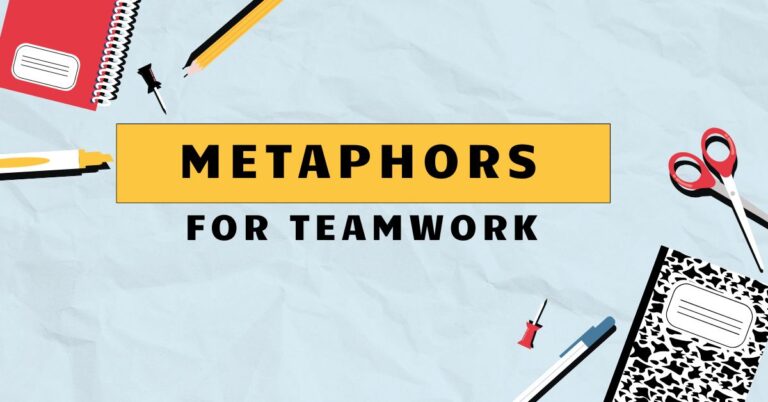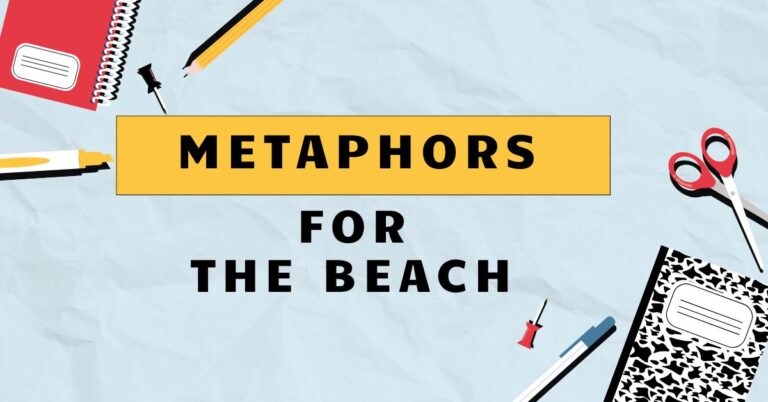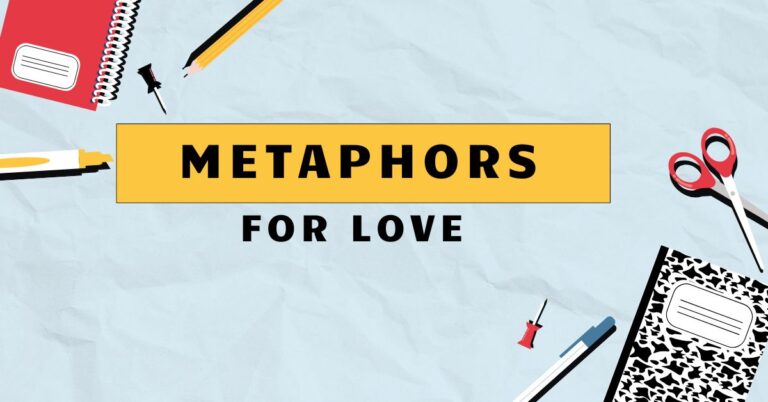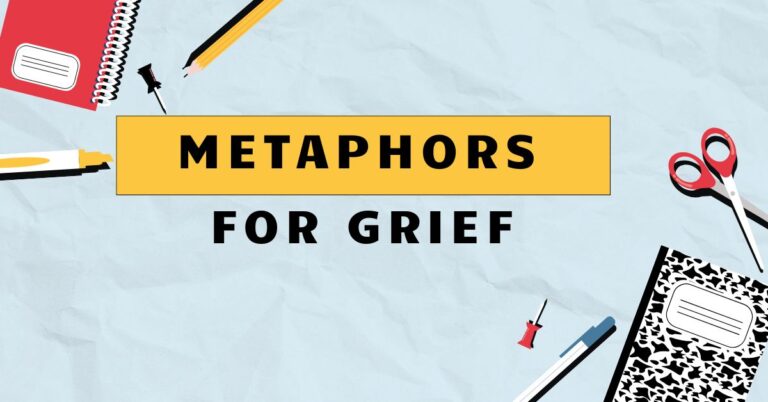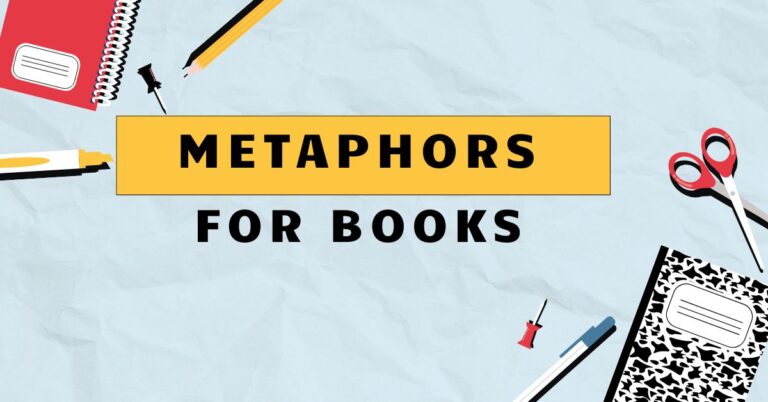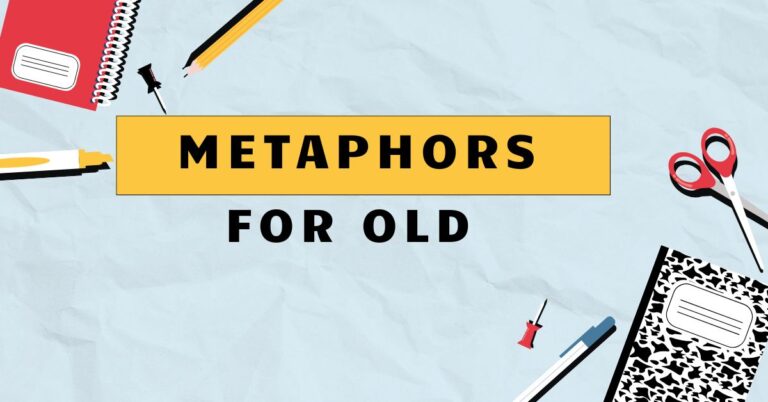41 Metaphors for Smart: Describing Intelligence Figuratively
Understanding metaphors for intelligence is crucial for mastering figurative language and enriching your communication skills. These metaphors not only add color and depth to our descriptions of intelligence but also provide insights into how we perceive and value intellect.
This article delves into the various metaphors used to describe intelligence, exploring their meanings, structural elements, and usage rules. Whether you are an English language learner, a seasoned writer, or simply someone interested in the nuances of language, this guide will equip you with the knowledge and tools to effectively use metaphors for “smart.”
By the end of this article, you’ll be able to identify, interpret, and use metaphors for intelligence in both spoken and written contexts. You’ll also learn to avoid common mistakes and appreciate the cultural implications of these figurative expressions.
Prepare to expand your linguistic repertoire and gain a deeper understanding of how we express and perceive intelligence through metaphor.
Table of Contents
- Definition of Metaphors for Smart
- Structural Breakdown
- Types or Categories of Metaphors for Smart
- Examples of Metaphors for Smart
- Usage Rules
- Common Mistakes
- Practice Exercises
- Advanced Topics
- FAQ
- Conclusion
Definition of Metaphors for Smart
A metaphor is a figure of speech that directly compares two unrelated things, asserting that one thing *is* another to imply a similarity. Metaphors bypass literal meanings to create vivid imagery and deeper understanding.
When we talk about someone being “smart,” we often use metaphors to convey the nature and extent of their intelligence in imaginative ways. These metaphors for “smart” can range from simple comparisons to complex allegories, painting a rich picture of intellectual ability.
In the context of language, metaphors function as a bridge between abstract concepts (like intelligence) and more tangible, relatable ideas. This allows us to grasp the nuances of intelligence more intuitively.
A metaphor for smart isn’t just a synonym; it’s a way of framing intelligence, emphasizing certain qualities over others. For instance, saying someone is a “walking encyclopedia” highlights their vast knowledge, whereas describing them as “quick-witted” emphasizes their mental agility.
Metaphors for intelligence can be classified based on the type of imagery they invoke. Some common categories include metaphors of light (e.g., “bright,” “illuminating”), metaphors of sharpness (e.g., “sharp,” “keen”), and metaphors of depth (e.g., “profound,” “deep”).
Understanding these categories can help you choose the most appropriate metaphor to convey the specific aspect of intelligence you want to highlight. The function of these metaphors in language is to add color, depth, and nuance to descriptions of intelligence, making them more engaging and memorable.
They also reveal underlying cultural values and assumptions about what constitutes intelligence.
Structural Breakdown
The structure of a metaphor typically involves two key elements: thetenorand thevehicle. The tenor is the subject being described (in this case, intelligence or a smart person), and the vehicle is the object or concept used to describe the tenor.
The connection between the tenor and the vehicle is the shared characteristic or quality that the metaphor highlights. This shared characteristic is often implied rather than explicitly stated.
Consider the metaphor “He is awalking encyclopedia.” Here, “he” (a smart person) is the tenor, and “walking encyclopedia” is the vehicle. The shared characteristic is vast knowledge.
The metaphor implies that the person possesses a wealth of information similar to that contained in an encyclopedia. The effectiveness of a metaphor depends on the strength and clarity of this implied connection.
Another important aspect of metaphorical structure is theground, which refers to the specific points of similarity between the tenor and the vehicle. In the “walking encyclopedia” example, the ground includes the breadth and depth of knowledge, the ability to recall information, and perhaps even the organized nature of the information.
The ground helps to clarify the meaning of the metaphor and prevent misinterpretation.
Metaphors can also be extended, meaning that the initial comparison is developed further with additional related imagery. For example, we might say, “He is a walking encyclopedia, always ready to open to the right page and provide the answer.” This extended metaphor builds on the initial comparison, adding more detail and reinforcing the image of the person as a repository of knowledge.
The structural understanding of metaphors helps in constructing and interpreting the figurative meanings effectively.
Types or Categories of Metaphors for Smart
Metaphors for intelligence can be categorized based on the specific qualities of intelligence they emphasize and the types of imagery they employ. Here are some common categories:
Light and Illumination Metaphors
These metaphors equate intelligence with light, brightness, and clarity. They suggest that intelligence illuminates understanding and dispels ignorance.
They are among the most common and readily understood metaphors for intelligence.
Sharpness and Precision Metaphors
These metaphors compare intelligence to sharp objects or precise instruments, emphasizing the ability to cut through complexity and arrive at accurate conclusions. These metaphors are often used to describe critical thinking and analytical skills.
Depth and Profundity Metaphors
These metaphors associate intelligence with depth, profundity, and insight, suggesting a capacity for understanding complex and abstract ideas. They highlight the ability to see beyond the surface and grasp the underlying meaning.
Capacity and Containment Metaphors
These metaphors portray intelligence as a container or vessel, emphasizing the ability to hold and process large amounts of information. They are often used to describe memory and learning capacity.
Speed and Agility Metaphors
These metaphors compare intelligence to speed, quickness, and agility, highlighting the ability to think and respond rapidly. They are often used to describe wit and problem-solving skills.
Examples of Metaphors for Smart
Here are some examples of metaphors for “smart,” categorized by the types discussed above. Each table provides a variety of examples to illustrate the range and versatility of these figurative expressions.
The following table showcases metaphors that use the imagery of light and illumination to describe intelligence. These metaphors often convey a sense of clarity, understanding, and insight.
| Metaphor | Explanation |
|---|---|
| He is a bright spark. | He is intelligent and quick-witted. |
| She has an illuminating mind. | Her insights are enlightening and clarifying. |
| His ideas are like beacons. | His ideas guide and inspire others. |
| She is a shining example of intelligence. | She is a model of intellectual excellence. |
| He sheds light on complex issues. | He clarifies and simplifies complex topics. |
| Her mind is a radiant sun. | Her intelligence is bright and powerful. |
| He is a guiding light in the field. | He provides leadership and direction through his intellect. |
| She has a brilliant mind. | She is exceptionally intelligent. |
| His intellect is like daylight. | His intelligence is clear and obvious. |
| She brightens every conversation with her insights. | She adds intelligence and clarity to discussions. |
| He is a luminary in his field. | He is a leading expert known for his intelligence. |
| Her mind is a lighthouse. | Her intelligence guides others through difficult situations. |
| He is a star student. | He is an outstanding student known for his intelligence. |
| She is a beacon of knowledge. | She is a source of information and wisdom. |
| His ideas are like a flash of insight. | His ideas are sudden and brilliant. |
| She is a well-lit mind. | Her thoughts are clear and well-organized. |
| He is a bright thinker. | He is an intelligent and insightful person. |
| Her intellect shines through in her work. | Her intelligence is evident in her accomplishments. |
| He is a font of enlightenment. | He is a source of understanding and wisdom. |
| She is a spark of genius. | She possesses exceptional intelligence and creativity. |
| His mind is a well-lit room. | His thoughts are clear and easily accessible. |
| She is a radiant intellect. | Her intelligence is bright and impressive. |
| He illuminates the path forward. | He provides clarity and direction in complex situations. |
This table provides examples of metaphors that use sharpness and precision to characterize intelligence. These metaphors often highlight analytical skills, critical thinking, and the ability to make fine distinctions.
| Metaphor | Explanation |
|---|---|
| She has a razor-sharp mind. | She is extremely intelligent and perceptive. |
| He is a keen observer. | He notices and understands subtle details. |
| Her intellect is like a scalpel. | Her intelligence is precise and incisive. |
| He has a pinpoint intellect. | His intelligence is focused and accurate. |
| She cuts through the noise with her logic. | She uses her intelligence to clarify complex situations. |
| He has a sharp wit. | He is quick and clever in his thinking and speech. |
| She is a precise thinker. | She is accurate and methodical in her thinking. |
| He has a finely tuned mind. | His mind is highly developed and sensitive. |
| She dissects arguments with precision. | She analyzes arguments carefully and accurately. |
| He has an incisive intellect. | His intelligence is penetrating and insightful. |
| She is a sharp cookie. | She is intelligent and astute. |
| He has a laser-like focus. | He can concentrate intently on a single task. |
| She is a master of precision. | She excels at tasks requiring accuracy and attention to detail. |
| He is a surgical thinker. | He approaches problems with precision and care. |
| She has a piercing intellect. | Her intelligence is insightful and penetrating. |
| He is a sharp as a tack. | He is very intelligent and alert. |
| She is a keen analyst. | She is skilled at analyzing complex information. |
| He has a needle-sharp mind. | He is extremely intelligent and perceptive. |
| She is a precise instrument. | She is highly effective and accurate in her work. |
| He is a master of accuracy. | He excels at tasks requiring precision and attention to detail. |
| She has a cutting-edge intellect. | Her intelligence is modern and innovative. |
| He is a master of detail. | He is extremely observant and thorough. |
| She is a pinpoint of accuracy. | She is exceptionally precise in her work. |
The following table illustrates metaphors that use depth and profundity to represent intelligence. These metaphors often suggest wisdom, insight, and a deep understanding of complex subjects.
| Metaphor | Explanation |
|---|---|
| He has a deep well of knowledge. | He possesses a vast amount of information. |
| She has a profound understanding of the subject. | She has a deep and thorough comprehension. |
| His insights are bottomless. | His understanding seems limitless. |
| She delves into the heart of the matter. | She explores the core issues deeply. |
| He has a fathomless intellect. | His intelligence is immeasurable and profound. |
| She is a deep thinker. | She contemplates complex issues thoroughly. |
| His mind is an ocean of knowledge. | He possesses a vast and comprehensive understanding. |
| She is a wellspring of wisdom. | She is a source of profound insight and guidance. |
| He has a deep reservoir of information. | He has a large store of knowledge readily available. |
| She explores the depths of human experience. | She examines complex and profound aspects of life. |
| He is a profound scholar. | He is a highly respected and knowledgeable academic. |
| She is a deep soul. | She has a profound and insightful understanding of life. |
| His intellect runs deep. | His intelligence is profound and far-reaching. |
| She is a well of wisdom. | She is a source of profound insight and guidance. |
| He has a deep-seated understanding. | His comprehension is thorough and firmly established. |
| She is a deep-rooted intellect. | Her intelligence is fundamental and enduring. |
| He delves into the abyss of knowledge. | He explores the most complex and challenging subjects. |
| She is a profound intellect. | Her intelligence is deep and insightful. |
| He has a deep fund of knowledge. | He possesses a vast store of information. |
| She is a deep mine of information. | She is a rich source of knowledge and insights. |
| He explores the depths of the human psyche. | He examines the complex and profound aspects of the human mind. |
| She has a profound grasp of the subject matter. | She has a deep and thorough comprehension of the material. |
This table provides examples of metaphors that portray intelligence as a capacity or container. These metaphors often emphasize the ability to store, process, and manage information effectively.
| Metaphor | Explanation |
|---|---|
| He is a walking encyclopedia. | He possesses a vast amount of knowledge. |
| She is a storehouse of information. | She contains a wealth of knowledge. |
| His mind is a vast library. | His intellect is filled with books and information. |
| She is a repository of knowledge. | She is a place where information is stored and preserved. |
| He has a mind like a steel trap. | He remembers everything he learns. |
| She is a vessel of wisdom. | She contains a deep understanding of life. |
| His brain is a powerful computer. | His mind processes information quickly and efficiently. |
| She is a container of ideas. | She is full of innovative and creative thoughts. |
| He has a mind like a sponge. | He absorbs information easily and quickly. |
| She is a reservoir of facts. | She is a source of accurate and reliable information. |
| He is a treasure trove of knowledge. | He is a valuable source of information and wisdom. |
| She is a data bank of information. | She stores and retrieves information efficiently. |
| His mind is an archive of history. | His intellect is filled with historical knowledge. |
| She is a powerhouse of intellect. | She has a strong and influential intelligence. |
| He has a mind like a filing cabinet. | He organizes and retrieves information efficiently. |
| She is a vault of secrets. | She keeps information safe and secure. |
| His brain is a processing unit. | His mind efficiently processes information. |
| She is a cornucopia of knowledge. | She is an abundant source of information. |
| He has a mind like a hard drive. | He stores a large amount of information. |
| She is a storage unit of facts. | She holds a vast amount of factual information. |
| He is a warehouse of data. | He stores a large quantity of information. |
| She is a knowledge hub. | She is a central source of information and expertise. |
The table below provides examples of metaphors that use speed and agility to describe intelligence. These metaphors often highlight quick thinking, responsiveness, and problem-solving skills.
| Metaphor | Explanation |
|---|---|
| He is quick-witted. | He is intelligent and responds rapidly. |
| She is a fast thinker. | She processes information quickly. |
| His mind is like lightning. | His thoughts are rapid and brilliant. |
| She is agile in her thinking. | She adapts quickly to new ideas and situations. |
| He is a nimble thinker. | He is quick and skillful in his thinking. |
| She is swift in her comprehension. | She understands things rapidly. |
| His mind is a race car. | His intellect is fast and powerful. |
| She is a whiz kid. | She is exceptionally intelligent and quick. |
| He is a speed demon when it comes to problem-solving. | He solves problems very quickly. |
| She is a rapid learner. | She learns things quickly and easily. |
| He is a flash of brilliance. | He has sudden and remarkable insights. |
| She is a quick study. | She learns new things quickly. |
| His mind is a well-oiled machine. | His intellect functions smoothly and efficiently. |
| She is a nimble negotiator. | She is quick and skillful in negotiations. |
| He is a rapid-fire thinker. | He generates ideas quickly and continuously. |
| She is a fast-track intellect. | She progresses quickly in her intellectual pursuits. |
| He is a lightning-fast learner. | He learns new information incredibly quickly. |
| She is a quicksilver mind. | She is agile and adaptable in her thinking. |
| He is a speed reader. | He reads and comprehends quickly. |
| She is a fast-paced intellect. | Her thinking is rapid and dynamic. |
Usage Rules
When using metaphors for “smart,” it’s important to follow certain rules to ensure clarity and effectiveness. First,ensure the metaphor is appropriate for the context.
A metaphor that works well in a literary setting may not be suitable for a formal academic paper. Consider your audience and the overall tone of your communication.
Also,avoid mixed metaphors, which occur when you combine two or more inconsistent metaphors in the same sentence. This can create confusion and undermine your message.
Maintain consistency within the metaphor. If you start with a metaphor of light, continue with related imagery rather than switching to a completely different concept.
For example, if you say someone is a “bright spark,” you might continue by saying they “illuminate complex issues” rather than saying they “have a mind like a steel trap.”Be mindful of cultural differences. Some metaphors may have different connotations or be interpreted differently in different cultures.
Ensure your metaphor is culturally appropriate for your intended audience.
Avoid clichés. Overused metaphors, such as “sharp as a tack,” have lost their impact and can make your writing sound unoriginal.
Try to come up with fresh and creative metaphors that will engage your audience.Use metaphors sparingly. Overusing metaphors can make your writing sound convoluted and artificial.
Use them strategically to enhance your message, not to overwhelm it.
Common Mistakes
One common mistake is usingmixed metaphors. This happens when two or more inconsistent metaphors are combined, creating a nonsensical image.
For example:
Incorrect: “He is a bright spark who always hits the nail on the head, but sometimes he’s a fish out of water.”
Correct: “He is a bright spark who always illuminates complex issues.” or “He always hits the nail on the head with his insightful comments.”
Another mistake is usingclichéd metaphors. These are overused expressions that have lost their impact.
For example:
Incorrect: “She is as sharp as a tack.”
Correct: “She has a razor-sharp mind that cuts through complexity.”
Misunderstanding the implications of a metaphor can also lead to errors. For example, using a metaphor that unintentionally conveys a negative connotation:
Incorrect: “He is a human calculator.” (This might imply he lacks creativity or emotional intelligence.)
Correct: “His brain is a powerful computer, capable of processing vast amounts of information.”
Finally, overusing metaphors can make your writing sound forced and artificial. It’s important to use them judiciously to enhance, not overwhelm, your message.
Practice Exercises
Test your understanding of metaphors for “smart” with these exercises. Identify the type of metaphor used in each sentence and explain its meaning.
| Question | Answer |
|---|---|
| 1. She is a beacon of knowledge for her students. | Light and Illumination Metaphor: She is a guiding source of information and wisdom. |
| 2. His mind is a steel trap, never forgetting a detail. | Capacity and Containment Metaphor: He has an excellent memory and retains information easily. |
| 3. He cuts through the red tape with his sharp intellect. | Sharpness and Precision Metaphor: He uses his intelligence to overcome obstacles and simplify complex processes. |
| 4. Her understanding of quantum physics is a deep well. | Depth and Profundity Metaphor: Her understanding is extensive and thorough. |
| 5. He’s a whiz kid when it comes to coding. | Speed and Agility Metaphor: He is exceptionally quick and skilled at coding. |
| 6. She is a storehouse of historical facts. | Capacity and Containment Metaphor: She possesses a vast amount of historical knowledge. |
| 7. His mind is like lightning, striking with brilliant ideas. | Speed and Agility Metaphor: His ideas are sudden, rapid, and insightful. |
| 8. She has a razor-sharp wit. | Sharpness and Precision Metaphor: She is quick and clever in her thinking and speech. |
| 9. He delves into the depths of philosophical thought. | Depth and Profundity Metaphor: He explores complex and profound philosophical ideas. |
| 10. She is a radiant intellect, always shining with new ideas. | Light and Illumination Metaphor: Her intelligence is bright, impressive, and constantly generating new insights. |
Exercise 2: Rewrite the following sentences using a metaphor for “smart.”
| Question | Answer |
|---|---|
| 1. He is very intelligent and knowledgeable. | He is a walking encyclopedia. |
| 2. She understands complex issues quickly. | She is a fast thinker who grasps complex issues in a flash. |
| 3. He is a brilliant and insightful leader. | He is a guiding light in the field, illuminating the path forward. |
| 4. She is exceptionally good at analyzing data. | Her intellect is like a scalpel, dissecting data with precision. |
| 5. He has a vast amount of information stored in his memory. | His mind is a vast library, filled with countless books and information. |
| 6. She is very wise and insightful. | She is a wellspring of wisdom, offering profound insights. |
| 7. He is quick to understand new concepts. | He has a mind like a sponge, absorbing new concepts effortlessly. |
| 8. She is a very bright and talented student. | She is a star student, shining brightly in her academic pursuits. |
| 9. He has a deep understanding of history. | He delves into the depths of history, uncovering profound insights. |
| 10. She is very skilled at solving problems quickly. | She is a speed demon when it comes to problem-solving. |
Exercise 3: Identify whether the following sentences contain a mixed metaphor. If so, rewrite the sentence to correct it.
| Question | Answer |
|---|---|
| 1. He is a bright spark who always hits the nail on the head, but sometimes he’s a fish out of water. | Mixed Metaphor. Corrected: He is a bright spark who always illuminates complex issues. |
| 2. She is a beacon of knowledge, guiding her students through rough waters. | Not a Mixed Metaphor. |
| 3. His mind is a steel trap that can also run like a well-oiled machine. | Mixed Metaphor. Corrected: His mind is a steel trap, never forgetting a detail. |
| 4. She cuts through the noise with her logic, but sometimes she’s a rolling stone. | Mixed Metaphor. Corrected: She cuts through the noise with her logic, clarifying complex situations. |
| 5. He has a deep well of knowledge that he also processes like a computer. | Mixed Metaphor. Corrected: He has a deep well of knowledge, filled with countless insights. |
| 6. She is a storehouse of information and also a radiant sun. | Mixed Metaphor. Corrected: She is a storehouse of information, containing a wealth of knowledge. |
| 7. His mind is like lightning, but also a vast library. | Mixed Metaphor. Corrected: His mind is like lightning, striking with brilliant ideas. |
| 8. She has a razor-sharp wit that is also a deep soul. | Mixed Metaphor. Corrected: She has a razor-sharp wit, quick and clever in her thinking and speech. |
| 9. He delves into the depths of philosophical thought while also being a speed demon. | Mixed Metaphor. Corrected: He delves into the depths of philosophical thought, exploring complex ideas. |
| 10. She is a radiant intellect, but also a mind like a steel trap. | Mixed Metaphor. Corrected: She is a radiant intellect, always shining with new ideas. |
Advanced Topics
At a more advanced level, understanding the nuances of metaphor involves exploring their cultural and historical contexts. Different cultures may use different metaphors to describe intelligence, reflecting their unique values and beliefs.
For instance, some cultures may emphasize wisdom and experience, while others may prioritize quick thinking and innovation. Analyzing the metaphors used in literature and historical texts can provide insights into how intelligence was perceived and valued in different times and places.
Another advanced topic is the use ofextended metaphors, where a single metaphor is developed over several sentences or paragraphs. This technique can create a powerful and sustained image, allowing for a more nuanced and detailed portrayal of intelligence.
However, it also requires careful planning and execution to avoid becoming convoluted or confusing.
Furthermore, exploring thecognitive sciencebehind metaphors can deepen your understanding of how they work. Cognitive scientists argue that metaphors are not merely decorative devices but fundamental tools for thought, shaping our understanding of abstract concepts.
By studying the cognitive processes involved in metaphorical thinking, you can gain a deeper appreciation for the power and potential of metaphors for “smart.”
FAQ
- What is the difference between a metaphor and a simile?
A metaphor directly equates two things (e.g., “He is a walking encyclopedia”), while a simile uses “like” or “as” to make a comparison (e.g., “He is like a walking encyclopedia”). Metaphors are more forceful and assertive, while similes are more tentative.
- Why are metaphors useful in describing intelligence?
Metaphors allow us to express the abstract concept of intelligence in more concrete and relatable terms, making it easier to understand and appreciate. They add color, depth, and nuance to our descriptions, making them more engaging and memorable.
- How can I avoid using clichéd metaphors?
Be creative and try to come up with fresh and original comparisons. Think about the specific qualities of intelligence you want to highlight and look for unusual and unexpected ways to express them. Read widely and pay attention to how other writers use metaphors effectively.
- What is a mixed metaphor, and how can I avoid it?
A mixed metaphor combines two or more inconsistent metaphors in the same sentence, creating a nonsensical image. To avoid it, ensure that all the imagery in your metaphor is consistent and logically related.
- Are some metaphors for intelligence culturally specific?
Yes, different cultures may have different metaphors for intelligence, reflecting their unique values and beliefs. Be mindful of cultural differences when using metaphors, and ensure they are appropriate for your intended audience.
- How can I use metaphors to make my writing more persuasive?
Metaphors can make your writing more persuasive by creating vivid images and appealing to the emotions of your audience. Choose metaphors that resonate with your readers and help them to see your point of view in a new and compelling way.
- What are some common metaphors for intelligence in different fields?
In science, intelligence might be compared to a powerful computer or a complex algorithm. In art, it might be likened to a wellspring of creativity or a canvas of endless possibilities. In business, it might be portrayed as a strategic game or a master plan.
- How do metaphors for intelligence reflect cultural values?
Metaphors can reveal what a culture values in
they describe intelligence. For example, a culture that values practical skills might use metaphors related to craftsmanship, while a culture that values theoretical knowledge might use metaphors related to scholarship.
- Can metaphors for intelligence be used in a negative way?
Yes, metaphors can be used sarcastically or critically to imply that someone is not as intelligent as they seem or that their intelligence is misdirected. For example, calling someone a “clever fool” suggests that their intelligence is not matched by wisdom or common sense.
- How can I improve my ability to understand and use metaphors?
Read widely, pay attention to how metaphors are used in different contexts, and practice using them in your own writing. Analyze the structure and meaning of metaphors, and consider their cultural and historical implications. The more you engage with metaphors, the better you will become at understanding and using them effectively.
Conclusion
Metaphors for “smart” provide a rich and varied way to describe intelligence, adding depth, color, and nuance to our language. By understanding the different types of metaphors, their structural elements, and the rules for using them effectively, you can enhance your communication skills and gain a deeper appreciation for the power of figurative language.
Whether you are writing a novel, giving a presentation, or simply engaging in everyday conversation, metaphors can help you to express your ideas more clearly and persuasively.
From metaphors of light and sharpness to metaphors of depth and agility, the possibilities are endless. By exploring these different categories and experimenting with your own creative comparisons, you can unlock new ways of thinking about and describing intelligence.
Remember to be mindful of cultural differences, avoid clichés and mixed metaphors, and use metaphors judiciously to enhance, not overwhelm, your message. With practice and attention to detail, you can master the art of using metaphors for “smart” and elevate your communication to a new level.


